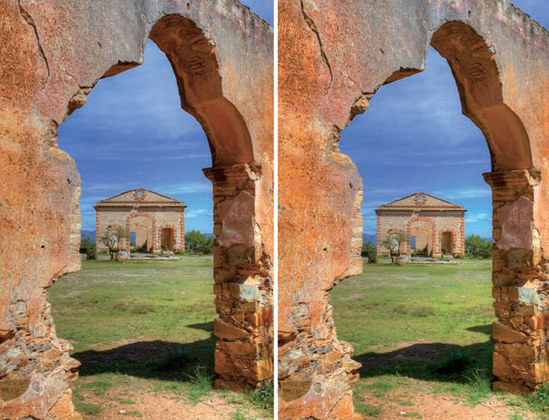Chapter IV. Pseudo HDR Single Files with Photomatix

Earlier, we explored how to create true HDR images with Photomatix, a cool and easy-to-use program. Here, you'll learn how to use Photomatix to create a pseudo HDR image from a single photograph.
Those single images, by the way, should be RAW files. Yes, you can convert JPEG and TIFF files to 16-bit files in Photoshop (Mode > 16 Bit) and use them to create pseudo HDR images. Keep in mind, however, that you'll get much better results from RAW files.
In some cases, when the contrast range is not greater than three stops, a pseudo HDR can look as good as a true HDR image. For example, can you tell which one of these images, taken at a ghost town near San Miguel de Allende, Mexico, is a pseudo HDR image and which one is a true HDR image? Okay, I'll tell you; the one on the left is the pseudo HDR.
Sure, there is no substitute for a true HDR image when the contrast range is extreme. But you'll see that you can create some really cool pseudo HDR images in Photomatix when the contrast range is manageable. What's more, if you have only recently gotten into HDR photography, try to create pseudo HDR images on your old RAW files. You will be surprised at the results. And this process will help you practice HDR techniques.
Contrast is the Determining Factor
On the previous page, you saw that it was hard to tell a pseudo HDR image from the true HDR ...
Get Rick Sammon's HDR Photography Secrets for digital photographers now with the O’Reilly learning platform.
O’Reilly members experience books, live events, courses curated by job role, and more from O’Reilly and nearly 200 top publishers.

